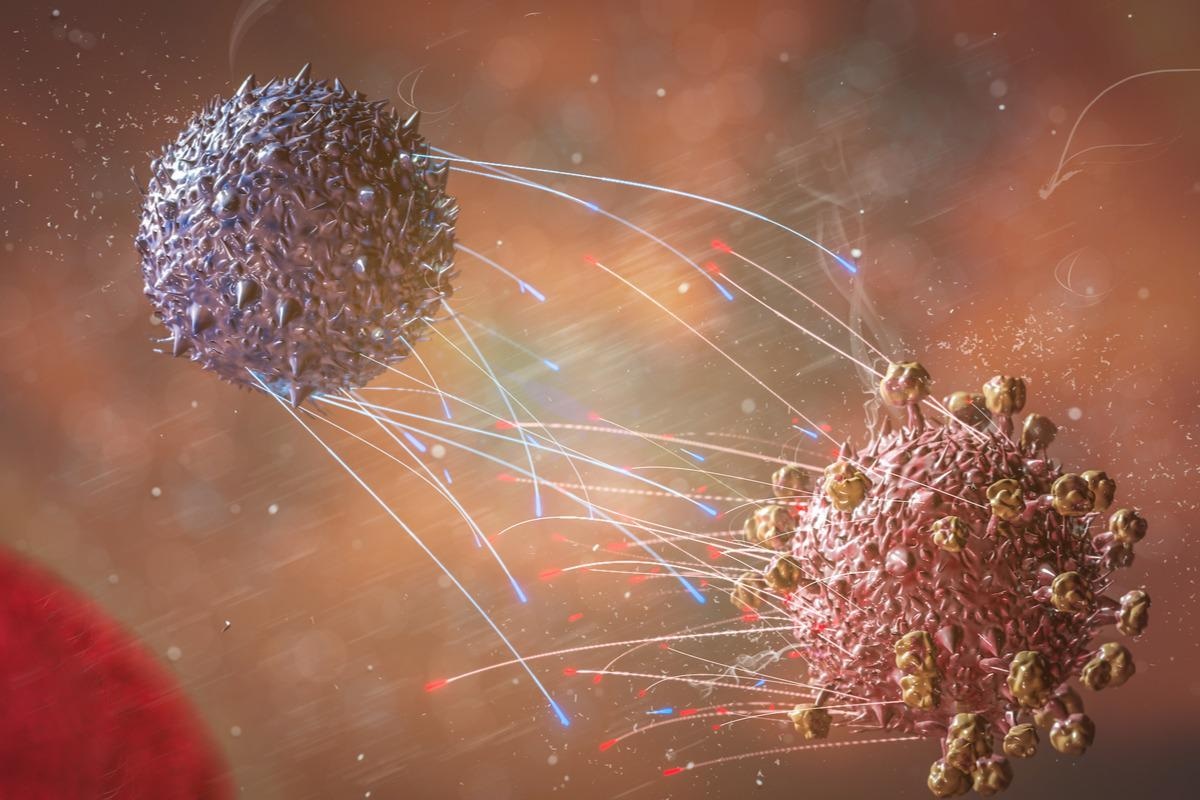In a recent preprint study posted to the bioRxiv* preprint server, researchers developed an immunodiagnostic T cell assay to classify T cell immune responses of the subjects based on their coronavirus disease (COVID-19) infection and vaccination history.
 Study: Distinguishing COVID-19 infection and vaccination history by T cell reactivity. Image Credit: CI Photos/Shutterstock
Study: Distinguishing COVID-19 infection and vaccination history by T cell reactivity. Image Credit: CI Photos/Shutterstock
Even though there is immune memory associated with cellular and humoral adaptive immunity against the severe acute respiratory syndrome-associated coronavirus 2 (SARS-CoV-2), the correlation of immune memory with protection against symptomatic COVID-19 disease and infection is not well established. The assessment of T and B cell responses and antibody titers may help establish the link between immune memory and COVID-19 protection.
Recent studies suggest there is a large novel repertoire of T cells in SARS-CoV-2 infection consisting of more than 80% epitopes not recognized in unexposed individuals. Additionally, viral vector or messenger ribonucleic acid (mRNA) vaccines in convalescent COVID-19 and unexposed patients boost the spike protein-specific immunity without affecting the non-spike SARS-CoV-2 components responses. The lack of powerful immunodiagnostic tools hinders the broad measurements of T-cell responses.
The study
In the present study, the researchers reported the development of two new pools of experimentally-defined T cell epitopes derived from the non-spike Remainder of the SARS-CoV-2 proteome (CD4RE and CD8RE). SARS-CoV-2-specific T cells were detected and quantified using these peptide pools in various T cell assays.
The new pools and spike (S) associated T cell responses were used to classify the subjects into four categories – infected and non-vaccinated (I+V-); non-infected and non-vaccinated (I-V-); non-infected and vaccinated (I-V+); and infected and then vaccinated (I+V+). The T cell response associated with breakthrough infections (infected vaccinees, V+I+) were also collected using the same classification system.
Except for the I-V- study group, all other samples were collected during the COVID-19 pandemic from 2020-2021, whereas I-V- samples were collected from pre-pandemic blood donations during 2013-2019.
A total of 239 subjects were recruited primarily from San Diego, California, after submitting an informed consent. The inclusion criteria for the study were confirmed SARS-CoV-2 cases by polymerase chain reaction (PCR), serodiagnosis, or both. Those who were not willing to participate had a medical contraindication to blood donation or could not provide informed consent were excluded from the study. The vaccines received by the subjects were either Pfizer or Moderna COVID-19 vaccines.
Using density gradient centrifugation in whole blood, the peripheral blood mononuclear cells (PBMC) were isolated and cryopreserved in liquid nitrogen suspended in 10% dimethyl sulfoxide (DMSCO) containing fetal bovine serum (FBS). Before PBMC isolation, plasma was obtained by centrifugation and cryopreserved at -80°C.
Results
The study results show that there was about 85-90% accuracy in the classification of subjects based on COVID-19 vaccination and infection history. The overall classification accuracy in the original cohort with 30 subjects per group was 89.2%, and the validation cohort with 96 subjects was 88.5%. The classification system performance was 86.6% when all of the five groups were combined.
The combined use of 253 overlapping peptides around the entire spike and 221 peptides from CD4RE pools in the classification of those with the known clinical status of COVID-19 yield results with high sensitivity and accuracy in activation-induced markers (AIM) assays.
Highly sensitive and accurate results were also found when T cell responses were measured using relative versus absolute determinations from various flow-cytometer platforms. The consistency of the T cell-based classification system was further established in an independent cohort with identical performances. The classification system can also be applied to data generated by FluoroSpot cytokine assays despite the reduced intrinsic sensitivity of this assay.
The study also demonstrated the application of this strategy for characterizing immune responses in breakthrough infections. Increased levels of CD4+ and CD8+ T cell reactivity were reported in breakthrough infections and simultaneous increases in S-receptor binding domain (RBD) immunoglobulin G (IgG) levels were also observed. These responses were similar to the responses of I+V+ groups in the study. The results suggest that in breakthrough infections, there was increased T and B cell reactivity while significant heterogenicity was also observed.
Conclusions
According to the authors, the first demonstration of the simple immunodiagnostic T cell assay that can classify T cell responses measured simultaneously in five different groups of known COVID-19 status of infection or vaccination was developed in this study. The study findings suggest that the immunodiagnostic T cell-based scheme is a significant tool for long-term follow-up of vaccination and establishing correlates of SARS-CoV-2 protection.
The classification tool developed in the study has a high predictive capacity to discriminate responses based on various COVID-19 immunity profiles and clinical applicability established by validation cohorts, different vaccines, and responses assessed at various periods post-vaccination or post-infection.
*Important notice
bioRxiv publishes preliminary scientific reports that are not peer-reviewed and, therefore, should not be regarded as conclusive, guide clinical practice/health-related behavior, or treated as established information.
- Esther Dawen Yu, et al. (2021). Distinguishing COVID-19 infection and vaccination history by T cell reactivity. bioRxiv. doi: https://doi.org/10.1101/2021.12.15.472874 https://www.biorxiv.org/content/10.1101/2021.12.15.472874v1
Posted in: Medical Science News | Medical Research News | Disease/Infection News
Tags: Antibody, Assay, B Cell, Blood, Blood Donation, CD4, Cell, Coronavirus, Coronavirus Disease COVID-19, Cytokine, Cytometer, immunity, Immunoglobulin, Pandemic, Peptides, Polymerase, Polymerase Chain Reaction, Protein, Proteome, Receptor, Respiratory, Ribonucleic Acid, SARS, SARS-CoV-2, Severe Acute Respiratory, Severe Acute Respiratory Syndrome, Spike Protein, Syndrome, T-Cell, Viral Vector

Written by
Susha Cheriyedath
Susha has a Bachelor of Science (B.Sc.) degree in Chemistry and Master of Science (M.Sc) degree in Biochemistry from the University of Calicut, India. She always had a keen interest in medical and health science. As part of her masters degree, she specialized in Biochemistry, with an emphasis on Microbiology, Physiology, Biotechnology, and Nutrition. In her spare time, she loves to cook up a storm in the kitchen with her super-messy baking experiments.
Source: Read Full Article
